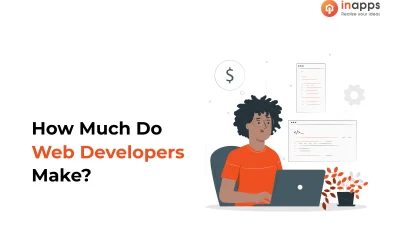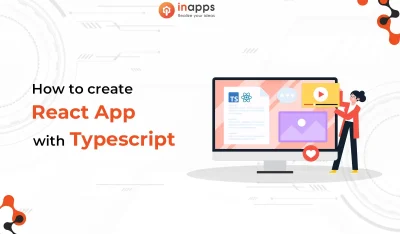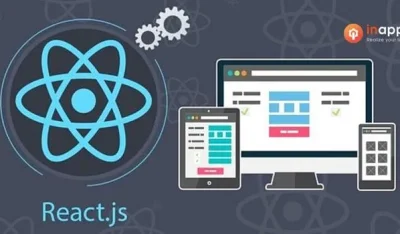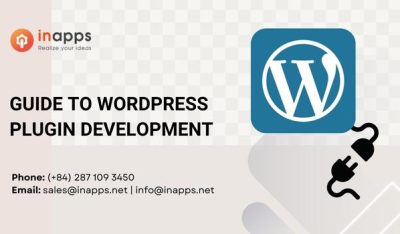- Home
- >
- Web Design & Development
- >
- What is WordPress Plugin Development?
WordPress plugin development is fairly easy, this article includes things you need to know to start.
WordPress powers 40% of all websites on the Internet, including those with a custom-coded CMS or without a content management system (CMS) (according to W3Techs).
To put it another way, WordPress controls one-third of the Internet!
WordPress’s enormous ecosystem of plugins is what makes it so strong.
What’s a WordPress Plugin?
Consider WordPress an unlimited lego board onto which we may insert a lego piece that adds value/functionality to the existing WordPress lego board.
Many similar lego pieces may be found in the WordPress plugin directory to help you add functionality and modify the appearance and feel of your website.
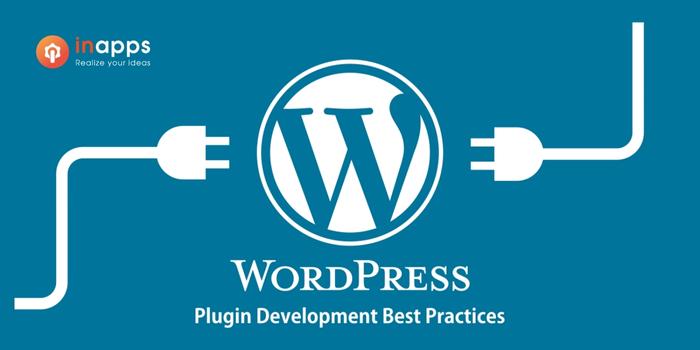
How does the WordPress plugin work?
Consider a plugin a piece of code that runs and makes the necessary adjustments each time you request a page from WordPress.
In other words, the WordPress server processes all active plugins and modifies the page based on the plugin code directives.
All of this makes any magic in the WordPress realm possible, ranging from:
- custom page builders.
- page comments filtering
- advanced SEO
- and many more
WordPress core comes preloaded with many functions that help plugin development a breeze.
Some of the functions we’ll be using are
add_action($tag, function)
‘’’php
add_action(‘wp_head’,’ functionToaddHeader’);
function functionToaddHeader(){
return (‘<h1> Header from my Plugin </h1> ‘);
}
‘’’
With this, we’ll be able to add content to the page’s header.
Then we have some database functions:
- get_option(key, value)
- delete_option(key)
- update_option(key, value)
WordPress Plugin Development Practice
Enough of words here; let’s dive in and make a very simple plugin.
Before moving ahead, we would advise you to set up a WordPress testing environment just to make sure any changes you make don’t affect any of your published content.
(‘https://developer.wordpress.org/themes/getting-started/setting-up-a-development-environment’)
Here we’ll be making a plugin to help them display their social links on every page/blog header.
Step 1: Head on to the WordPress directory and then to wp-content/plugin
Step 2: Here, we’ll be naming our plugin as ‘my_plugin’
so create a folder ‘my_plugin’
However, for publishing, you need to make the name unique.
Step 3: Inside my_plugin folder, create two files.
1) my_plugin.php
This will act as the entry point for our plugin
2) uninstall.php
This usually contains some cleanup logic that runs when the user uninstalls your plugin.
3) Also create a dashboard.php
This will render a simple HTML form to take user inputs.
File: my_plugin.php
‘’’php
<?php
/**
* Plugin Name: My Plugin
* Plugin URI: http://pluginURI.com
* Description: Brief About Your Plugin
* Version: 1.0.0
* Author: Your Name
* License: GPL2
*/
if(!defined('ABSPATH')){ die; }
add_action('wp_head', 'functionToaddHeader');
add_action('admin_menu', 'addPluginAdminMenu' , 9);
function functionToaddHeader(){
$data = get_option('socialLinks');
if(is_array($data)){
$fb = $data['facebook'];
$ins = $data['instagram'];
$twi = $data['twitter'];
print("
<div >
<a style="padding: 0px 5px " href="https://codersera.com/blog/wordpress-plugin-development/$fb"> Facebook </a>
<a style="padding: 0px 5px " href="$ins"> Instagram </a>
<a style="padding: 0px 5px " href="$twi"> Twitter </a>
</div>
");
}
}
function checkFormSubmission(){
if(array_key_exists('myPlugin_submit', $_POST)){
$facebook = $_POST['facebook'];
$twitter = $_POST['twitter'];
$instagram = $_POST['instagram'];
$data = array(
"facebook" => $facebook,
"twitter" => $twitter,
"instagram" => $instagram,
);
update_option('socialLinks', $data);
}
}
function renderPageFun(){
require_once(plugin_dir_path( __FILE__ ).'/dashboard.php');
}
function addPluginAdminMenu(){
add_menu_page( 'MyPlugin' , 'MyPlugin', 'administrator', 'plugin-settling-page' , 'renderPageFun' , 'dashicons-chart-area', 30 );
}
?>
‘’’
Line 1-11 are plugin meta-data.
The entry point file must contain meta-data to make your WordPress recognize your plugin.
Line 13 This prevents the plugin from being accessed by any other means than WordPress admin panel.
add_action('admin_menu', 'addPluginAdminMenu' , 9)
add_action('wp_head', 'functionToaddHeader');
These are action triggers that are already defined in WordPress core.
The first one adds an admin-menu-item.
The second one adds a header to every page/blog.
The second parameter is the function that returns or performs the actions.
You can read more about the function from WordPress official doc.
(‘https://codex.wordpress.org/Plugin_API/Action_Reference’)
Refresh your admin plugins listings and now you will see the plugin listed
Now that we have the code in place we can activate the plugin and see what it does.
Now let’s also create a file dashboard.php. This will be our plugins dashboard page.
Here we’ll provide options to update the social links.
File dashboard.php
‘’’php
<h1>Welcome To Social Links</h1>
<?php
$submitURL = admin_url().'admin.php?page=plugin-settling-page';
$data = get_option('socialLinks');
if(is_array($data)){
$fb = $data['facebook'];
$ins = $data['instagram'];
$twi = $data['twitter'];
}
?>
<form method = "POST" action = "<?php echo $submitURL ?>">
<span >Facebook </span> <input type = "text" name = "facebook" value = "<?php echo $fb ?>"/><br/><br/>
<span >Instagram </span> <input type = "text" name = "instagram" value = "<?php echo $ins ?>" /><br/><br/>
<span >Twitter </span> <input type = "text" name = "twitter" value = "<?php echo $twi ?>" /><br/><br/>
<button type = "submit" name = "myPlugin_submit">Save</button>
</form>
‘’’
This is a simple php file that outputs html with data stored in the database.
Initially the data is empty but once you fill in the details the fields will display the corresponding data.
The form submission is handled by checkFormSubmission() function defined in the main php file
To see the result you can visit any of your page/blog.
I haven’t done much of the stylings here but i know you can do much better.
File uninstall.php
‘’’php
if (!defined('WP_UNINSTALL_PLUGIN')) {die; }
delete_option('socialLinks');
‘’’
The first line prevents the file from running if it’s called directly or suspiciously.
The next line deletes the data that we stored on form submission.
Key Takeaways
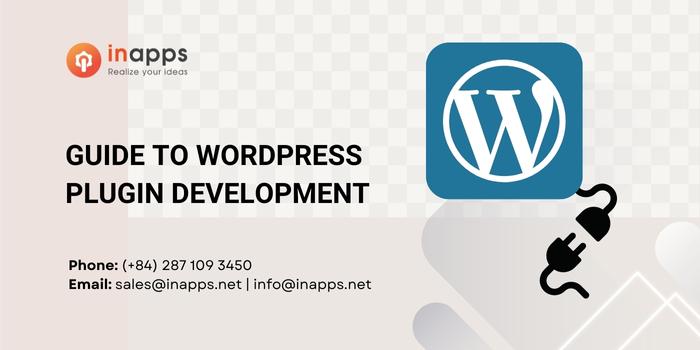
WordPress plugin development is fairly easy, however, you need to know the following to get started:
- Web Development (HTML, CSS, Javascript)
- WordPress Plugin Architecture.
- Little understanding of WordPress core APIs.
To begin, we recommend reading some blog entries describing the process and consulting the WordPress codex if you get stuck. InApps is always one step ahead of its audience regarding new technology, development, or expertise.
Navigate to Plugins in your WordPress admin dashboard, then click Add New. On the following screen, click Upload Plugin to pick a plugin file from your machine. Click Install Now after selecting the very-first-plugin.zip file you made.
If the plugin is simple, offers a few unique features, and you can submit a concise specification simply, with examples, the cost will be between $500 and $1000.
Every WordPress plugin you install on your website is recorded in your WordPress database. You may switch them on and off at any time.
WordPress connects to the database for each visit, loads the core software, and loads your active plugins.
List of Keywords users find our article on Google
“}” data-sheets-userformat=”{“2″:513,”3”:{“1″:0},”12″:0}”>[sociallocker id="2721"]| wordpress ordering |
| wordpress plugin development |
| wordpress developer jobs |
| php echo |
| wordpress form to database plugin |
| wp codex |
| wordpress form database plugin |
| wordpress |
| wordpress codex |
| wordpress plugin |
| how to wordpress |
| wordpress delivery plugin |
| wordpress how to |
| trustpilot wordpress |
| wordpress food order plugin |
| get_option |
| food ordering wordpress |
| food delivery plugin |
| wordpress food ordering plugin |
| codex wordpress |
| /header.php?abspath= |
| wordpress food menu plugin |
| wordpress plugin form to database |
| online food ordering system wordpress |
| wp_head |
| wordpress development |
| wordpress developer |
| lego mars mission |
| difference between wordpress com and wordpress org |
| main.php?action= |
| trustpilot wordpress plugin |
| delivery plugin wordpress |
| wordpress facebook plugin |
| food ordering plugin |
| wordpress function |
| what is wordpress and how does it work |
| dashboard wordpress |
| html wordpress |
| wordpress development services |
| wordpress backend plugin development |
| wordpress org admin login |
| wordpress game plugin |
| wawa menu |
| blog designer plugin |
| php echo new line |
| plugin_dir_path |
| facebook page plugin wordpress |
| web to print wordpress |
| wordpress plugin form submit |
| wordpress facebook page plugin |
| add_action wordpress |
| hire breeze.js developers |
| wordpress form submit |
| seo plugin php |
| wordpress page php |
| wordpress responsive menu |
| formulier wordpress |
| contact plugin wordpress |
| wordpress services plugin |
| br wordpress org |
| http://wordpress.org |
| wordpress org themes |
| wordpress __ |
| lego mission to mars |
| wordpress plugin codex |
| wordpress telegram plugins |
| how can i view free wordpress.org plugins and themes |
| plugin game wordpress |
| wordpress meta environment |
| wordpress array |
| add_action(‘wp_head’ |
| wordpress blog design plugin |
| get_option wordpress |
| wordpress frontend uploader |
| blog designer wordpress plugin |
| wordpress user profile frontend |
| lego board |
| ordering wordpress |
| facebook plugin wordpress |
| wordpress breeze plugin |
| wordpress functions |
| wordpress create plugin admin page |
| wordpress custom page php |
| wordpress web to print |
| facebook plugin voor wordpress |
| form to database wordpress |
| wordpress facebook |
| wordpress guide |
| directory software wordpress |
| manager wordpress |
| wordpress frontend post submission |
| woocommerce plugin print |
| wordpress food plugin |
| directory plugin wordpress |
| wordpress file upload plugin for admin |
| wordpress meaning |
| wordpress custom dashboard plugin |
| wordpress menu |
| wordpress email |
| best wordpress plugins |
| how to install wordpress plugins |
| what is a wordpress developer |
| wordpress website design company |
| custom wordpress development services |
| codex.wordpress.org |
| wordpress development 2022 |
| wordpress.org plugins |
| https wordpress org login |
| wordpress.org themes |
| www wordpress org login wp admin |
| development facebook |
| lego tan head |
| __ wordpress |
| lego architecture display case |
| wp get_option |
| cms offshore in vietnam |
| mars mission legos |
| lego developer jobs |
| wordpress org app |
| set up wordpress meta environment |
| will wordpress die |
| wordpress active directory |
| get all products woocommerce php |
| php echo $_post |
| wordpress do action return value |
| delete_option |
| wordpress linked in plugin |
| infinite wordpress |
| breeze wordpress |
| outsourcing facebook posts |
| wordpress admin_url |
| wordpress telegram plugin |
| author pegas |
| codex word |
| wordpress linkedin plugin |
| abspath wordpress |
| linkedin wordpress plugin |
| w3techs sites |
| whatsapp me wordpress plugin |
| what is padding in wordpress |
| wordpress food delivery plugin |
| wordpress.org install |
| h1 webdevelopment |
| hrm wordpress |
| plugin_dir_path( __file__ ) |
| admin_url |
| data quality management plugins |
| wordpress wp_head |
| facebook wordpress |
| lego templates design |
| php add_action |
| w3techs |
| dna center design guide |
| wordpress template facebook |
| linkedin header template |
| wp user frontend |
| breeze plugin wordpress |
| create wordpress plugin with database |
| wordpress org seo |
| add_action wp_head |
| hrm twitter |
| submit form wordpress |
| wordpress get option array |
| hcmc chart |
| php echo to file |
| web to print wordpress plugin |
| wordpress react plugin |
| ats wordpress |
| wordpress plugin form with file upload |
| wordpress update user meta |
| wp get plugin directory uri |
| wp_head() |
| online food delivery wordpress plugin |
| wordpress directory themes |
| wp admin plugins php |
| best wordpress telegram plugins |
| custom header wordpress plugin |
| frontend file upload wordpress plugin |
| plugin restaurant wordpress |
| wordpress user meta fields |
| lego mars mission game |
| meta tag manager wordpress |
| react refresh plugin |
| wordpress plugin form upload file |
| wordpress print form plugin |
| add_action |
| facebook page plugin for wordpress |
| food menu plugin wordpress |
| lego dna model |
| product design plugin wordpress |
| wordpress get term by name |
| get plugins directory wordpress |
| organization chart wordpress plugin |
| php echo data |
| wordpress add_menu_page |
| wordpress admin custom page |
| wordpress chart plugin |
| wordpress frontend file manager plugin |
| wordpress html sitemap without plugin |
| wordpress listings plugin |
| wordpress print page button |
| display case for lego |
| echo new line php |
| php seo plugin |
| simple org chart wordpress |
| span plugin |
| wordpress plugin file upload |
| wordpress plugin whatsapp business |
| wordpress portfolio plugin |
| wordpress travel plugins |
| wp_head in wordpress |
| custom header wordpress |
| facebook like box popup wordpress |
| facebook wordpress plugins |
| get directory wordpress |
| whatsapp wordpress plugin |
| wordpress directory software |
| wordpress facebook like |
| wordpress twitter |
| wordpress typescript |
| wp get plugin directory |
| action wp_head |
| add_action( ‘wp_head’ |
| best plugin for wordpress |
| plugin facebook |
| wordpress development jobs |
| wordpress form to database |
| wordpress plugin twitter |
| zippered portfolio folder |
| wordpress custom dashboard page |
| what is wordpress |
| wordpress to mobile app |
| menu wordpress |
| blog wordpress |
| wordpress plugin tips |
| wordpress analytics plugin |
| how to design a wordpress website |
| wordpress content dashboard |
| wordpress dashboard tool |
| how to design a website with wordpress |
| wordpress custom menu |
| wordpress blog how to |
| wordpress website help |
| wordpress site design |
| h1 header |
| wordpress website design |
| wordpress consultant |
| wordpress web development companies |
| wordpress developer company |
| wordpress web development company |
| wordpress website development company |
| wordpress website development service |
| wordpress development company |
| wordpress website services |
| wordpress web development services |
“}” data-sheets-userformat=”{“2″:513,”3”:{“1″:0},”12″:0}”>
Let’s create the next big thing together!
Coming together is a beginning. Keeping together is progress. Working together is success.





